In the Arabic alphabet, each letter may change its shape depending on its position within a word. The Arabic Daal (د) is one of the simplest yet unique letters in the Arabic script. Unlike many other letters, it does not connect to the letter following it, which affects how it appears in various positions. Understanding the different forms of arabic daal is essential for beginner learners to build strong reading and writing foundations.
How to Write the Arabic Daal in All Positions
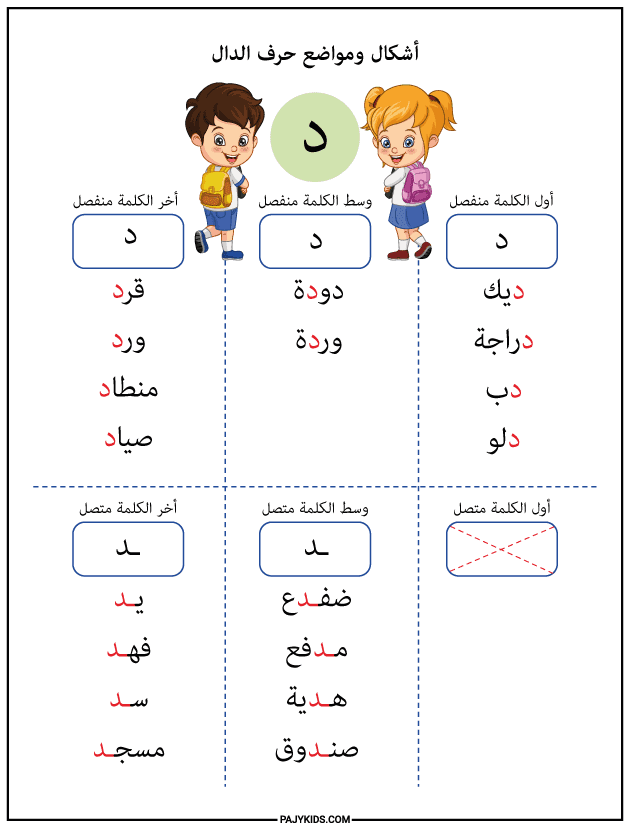
- Initial Position of Arabic Daal
When arabic daal appears at the beginning of a word, it takes its basic isolated shape: د. It does not connect to the following letter, which sets it apart from many Arabic letters. Examples include: دب (dub – bear), دجاجة (dajaja – chicken), and دليل (daleel – guide). This non-connecting behavior is a key feature of arabic daal in its initial form.
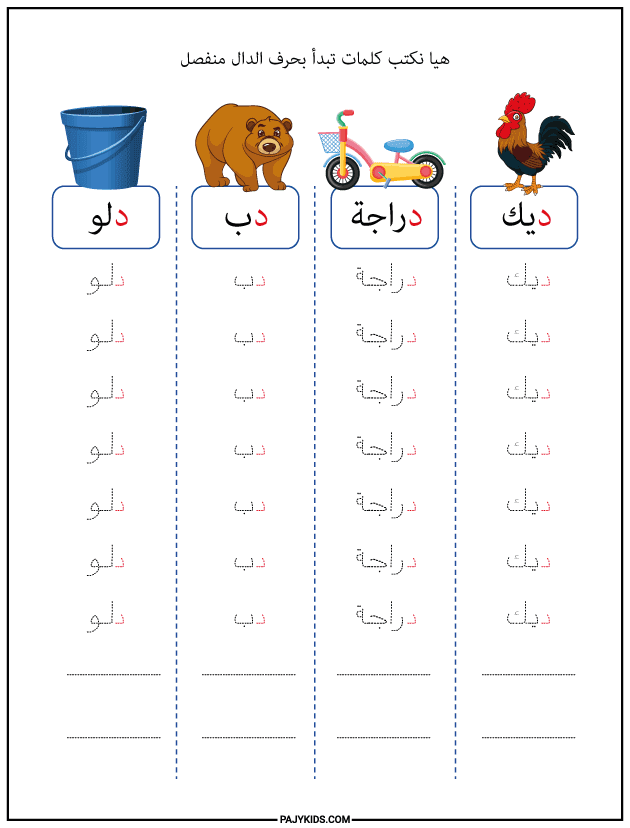
- Medial Position of Arabic Daal
When placed in the middle of a word, arabic daal also keeps its simple shape: ـد. Since it doesn’t connect to the letter after it, it appears as a break in the flow of connected letters. Some examples are: بدر (badr – moon), يد (yad – hand), and هدية (hadyia- gift). This helps students visually identify arabic daal easily, even when surrounded by connected letters.
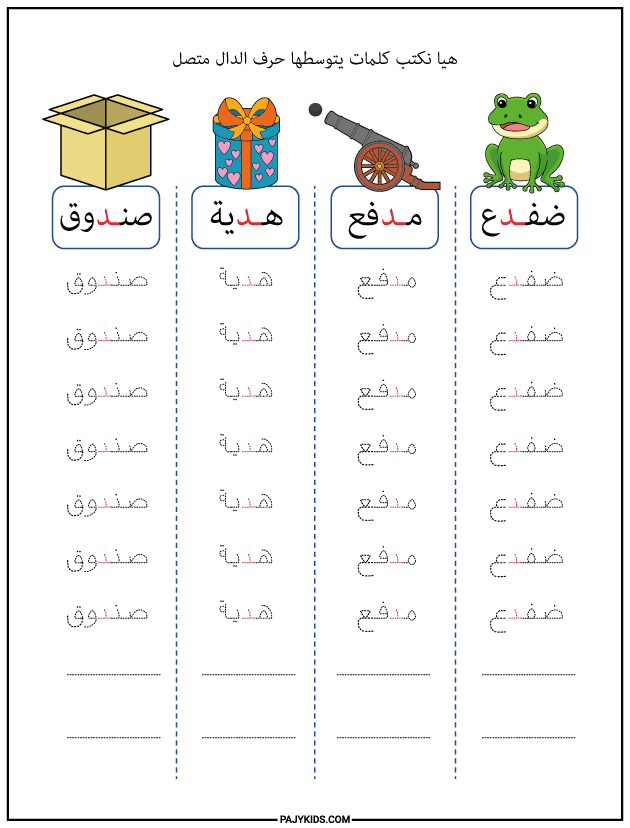
- Median Position of the Arabic Dāl (Separate)
Also, when placed in the middle of a word, the Arabic Dāl retains its simple form: د. Because it is not connected to the letter that precedes or follows it, it appears as a separator in a series of connected letters. Examples include دودة (worm) and وردة (rose). This helps students easily distinguish the Arabic Dāl visually, even when it is alone.
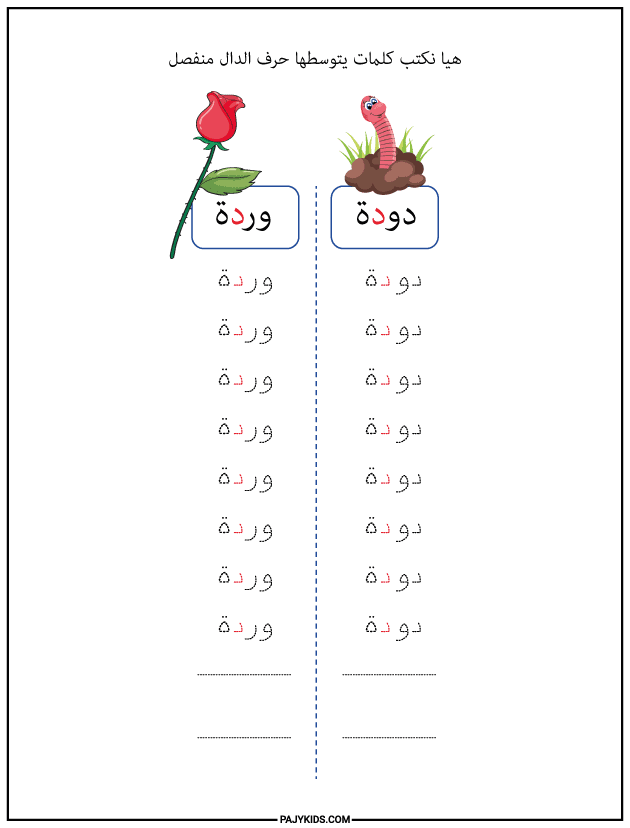
- Dal Arabic Letter Final Position – Connected
When arabic dal appears at the end of a word, and is preceded by a connecting letter, it is written as ـد. This connected form is seen in words like: ولد (walad – boy), جسد (jasad – body), and سعد (saad – name). Learners must recognize that while daal connects from the right, it never connects to the left.
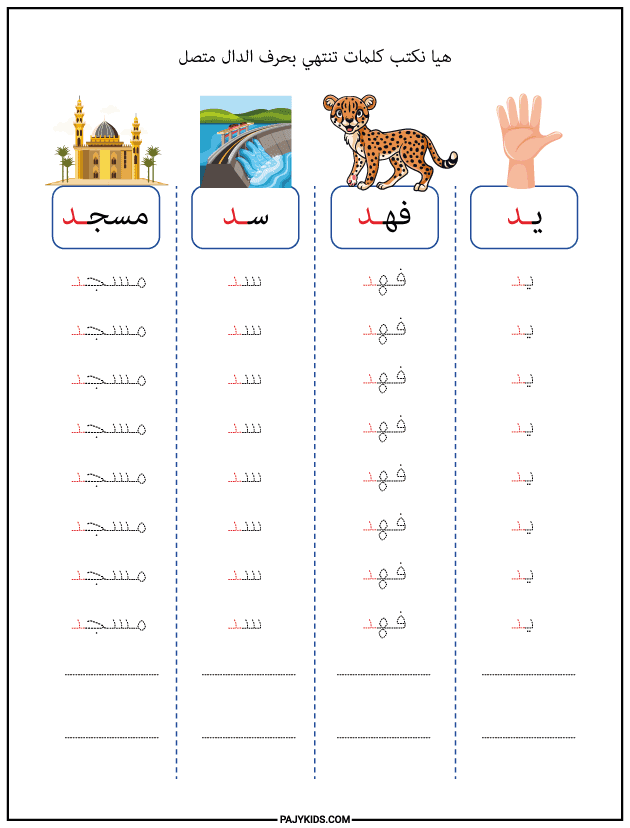
- Arabic Letter Daal Final Position – Isolated
If the letter before arabic dal is non-connecting, the daal appears isolated at the end, simply written as د. Examples include: قرد (monkey), and ورد (rose). This isolated ending highlights the consistency of arabic daal’s form across different positions.
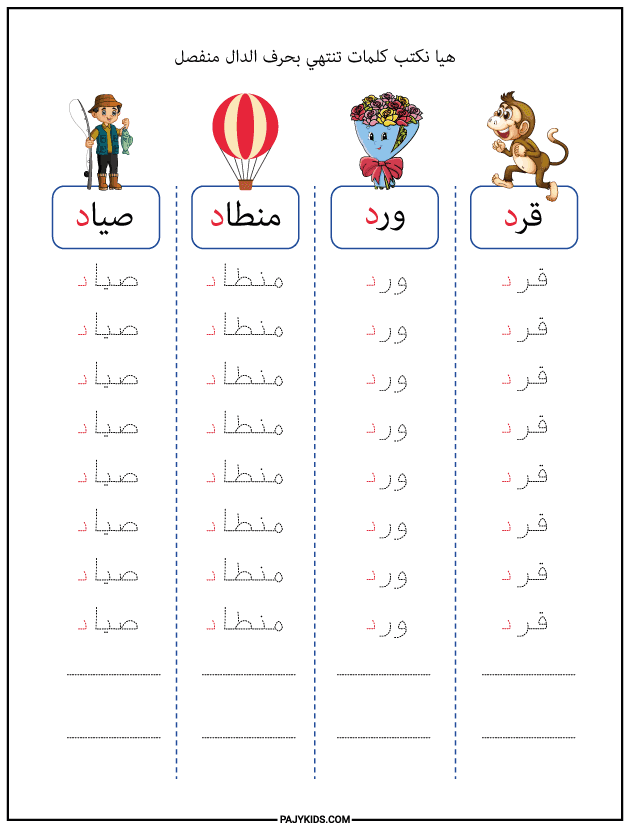
To help learners master arabic daal, use clear visuals showing how it appears in each position. Activities like tracing, matching, and using flashcards with real words will enhance memory and recognition. Emphasizing that daal doesn’t connect to what follows can prevent writing errors in the early learning stages.